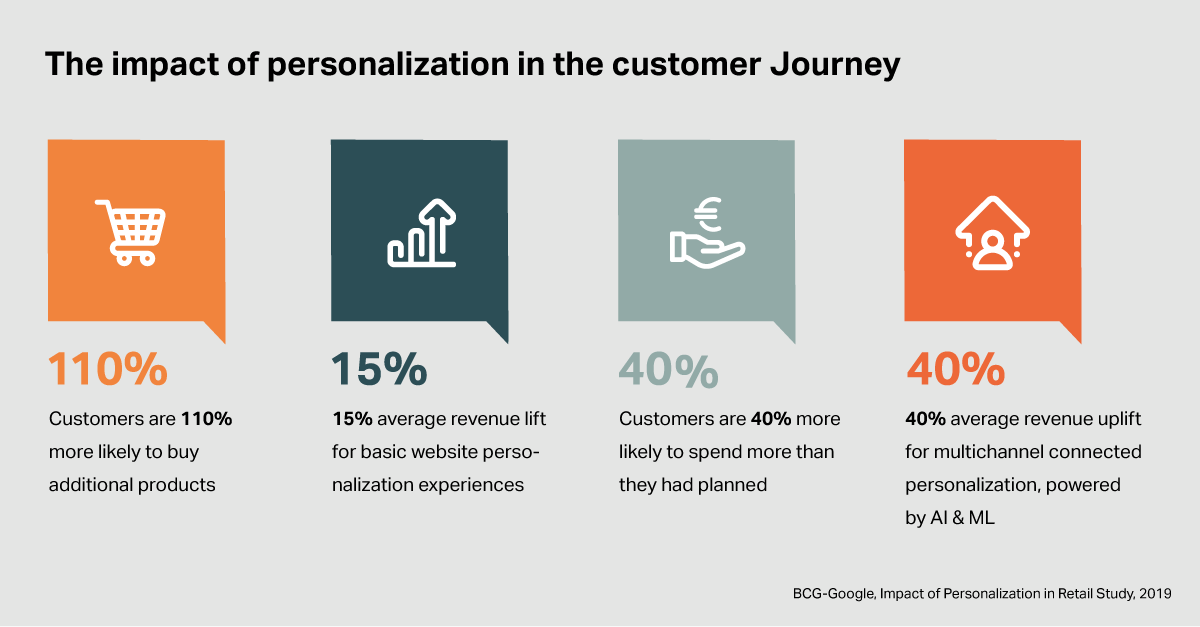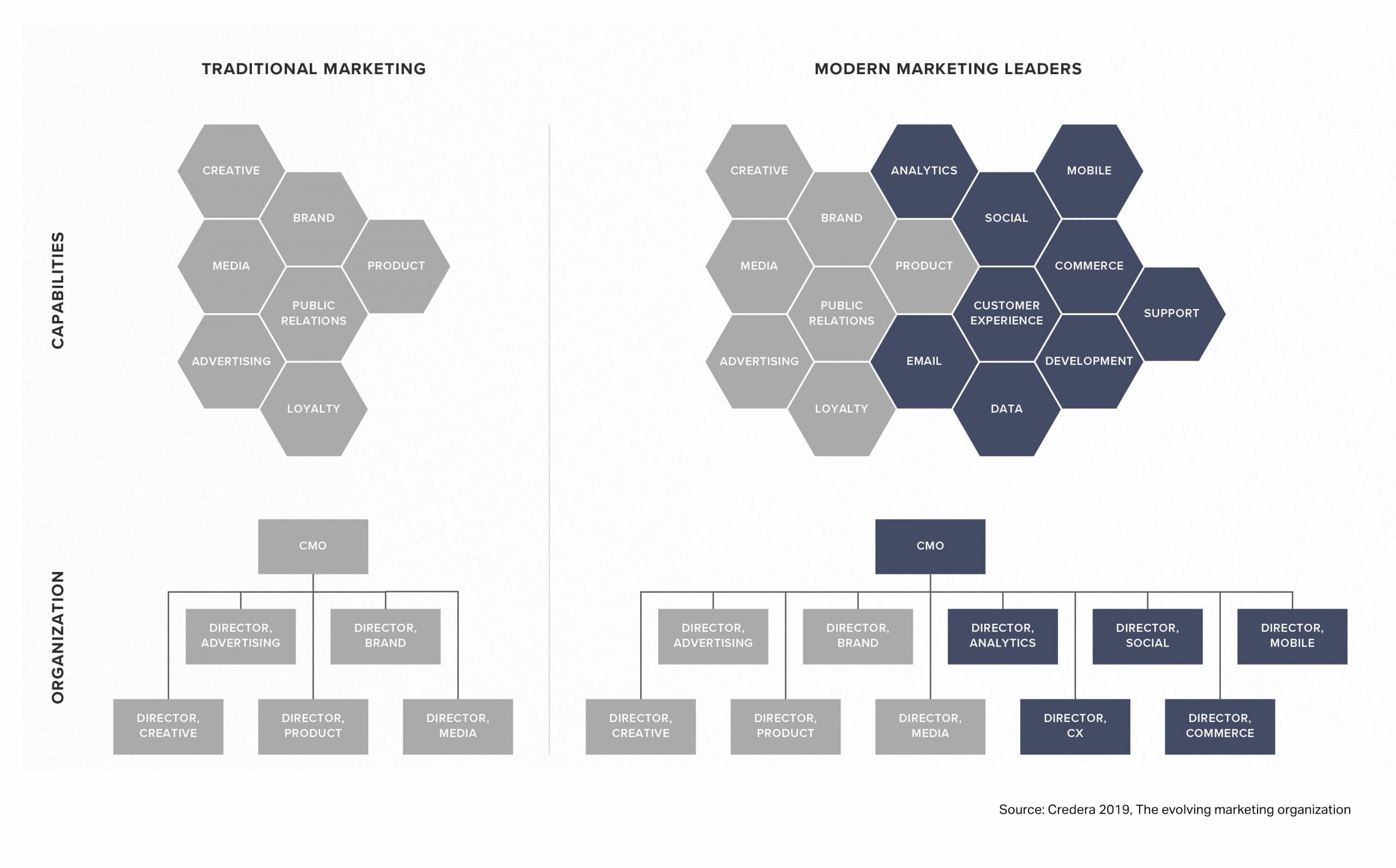As occurs every year, the marketing community is starting 2020 with new ideas, ambitious plans and a lot of speed heading into the next 12 months. The spectrum of topics is as varied as the list of channels and disciplines. At the top of the agenda are still projects around the implementation of use-centered, hyper-personalization and the integration of AI in marketing applications. Everything revolves around the user and relevant, individual user experiences, which should be coordinated across media and channels.
In this context, I would like to place the spotlight on an issue that plays an important role for the implementation and success of user experience projects in 2020 and beyond, but is usually much less seriously discussed and addressed than technological or creative issues: I’m talking about the marketing organization.
There is now a widespread consensus that user-centered personalization can benefit both consumers and providers. The (potential) customer derives more pleasure from having products presented and promoted to him that correspond to his affinities and that sometimes surprise him, which leads to more engagement and in the end increases the probability of purchase and the value of the items purchased in the shopping basket. An “easy win” for us marketers and the results of our companies. By the way: the result lever is not to be sneezed at. Last year’s Boston Consulting/Google Study titled “Business Impact of Personalization in Retail” shows that companies achieve 15% more revenue with personalized user experiences, and up to 40% more with cross-channel personalization.
Figure 1: Sales growth through personalization
Digital pioneers like Netflix or Spotify – both readily mentioned in this context, and rightly so! – do an extremely good job when it comes to personalization and set benchmarks. Todd Yellin, Vice President of Product at Netflix, explains the level at which his company is implementing personalization, while also giving us a feel for the term “hyper-personalization”:
“Our personalization enables us to create more than 250 million tailored experiences to delight each user every single time they enter the platform”. In purely numerical terms, these add up to more experiences than the number of Netflix’s current paying users. A prime example of consistent user-centered personalization. I’m sure most marketers would like to report a similar level of maturity of their user-centered projects.
What do we marketers have to do to implement user-centered, hyper-personalization as well as the role models have done for years? And why do so many companies fail to implement it when technology is becoming a commodity?
I am convinced that the answer lies essentially in your own organisation. Most marketing organizations still follow the pattern of independent channels and touchpoints and are largely unsuited to implementing personalized marketing processes. They are trapped in structures of “traditional marketing”, as the chart below illustrates. Important responsibilities that the “Modern Marketing Leaders” have already anchored in the marketing organization have not been clarified and specialist departments have either not yet been established or have been assigned to other areas. In most cases, cross-functional processes that lead to similarly successful results as Netflix are not sufficiently available.
Figure 2: Marketing organizations of digital leaders
The before mentioned Boston Consulting /Google study also points to this fundamental problem. Their experts have determined that the problem described here occur particularly in larger companies. In these firms, “inadequate cross-functional coordination tends to be the biggest obstacle” to the implementation of personalization ” (BCG The Next Level of Personalization in Retail 2019).
What’s wrong with many companies?
I think that in most organisations the user’s or customer’s point of view is not sufficiently represented. The user always perceives a brand or a product in a uniform and comprehensive way. If, for instance, I want to buy a car and I am interested in a model of a brand, then I expect – subconsciously – a consistent interaction of this brand with me, which optimally reflects the interest I displayed, at any time, on any channel.
The reality, however, is that (a) target groups rather than individual users are considered, (b) different departments within the marketing organisation still set up different campaigns that are not coordinated with each other for the same target groups, which (c) leads to the user not finding his interest reflected in brand communication. The result: personalization cannot or not properly be implemented, the user experience cannot be optimized, and sales potentials cannot be fully exploited.
What that means:
Today, CMOs are much more likely to think about how to make not just the business organization, but also the marketing organization, user-centered so that the data and technology available to the business will generate the expected return on investment. The secret of success lies less in the technology than in comprehensive, coordinated processes and functional organization.
So, a good resolution for 2020 could be putting your own organisation, with all its skills and processes, to the test and comparing it with the requirements resulting from user-centered personalization. Those who seriously implement the findings from this exercise afterwards will create the basis for greater marketing efficiency and will be “digitally ready” for the next evolutionary steps that technology, data and AI will bring us.
Foto: Jared Erondu | Unsplash



